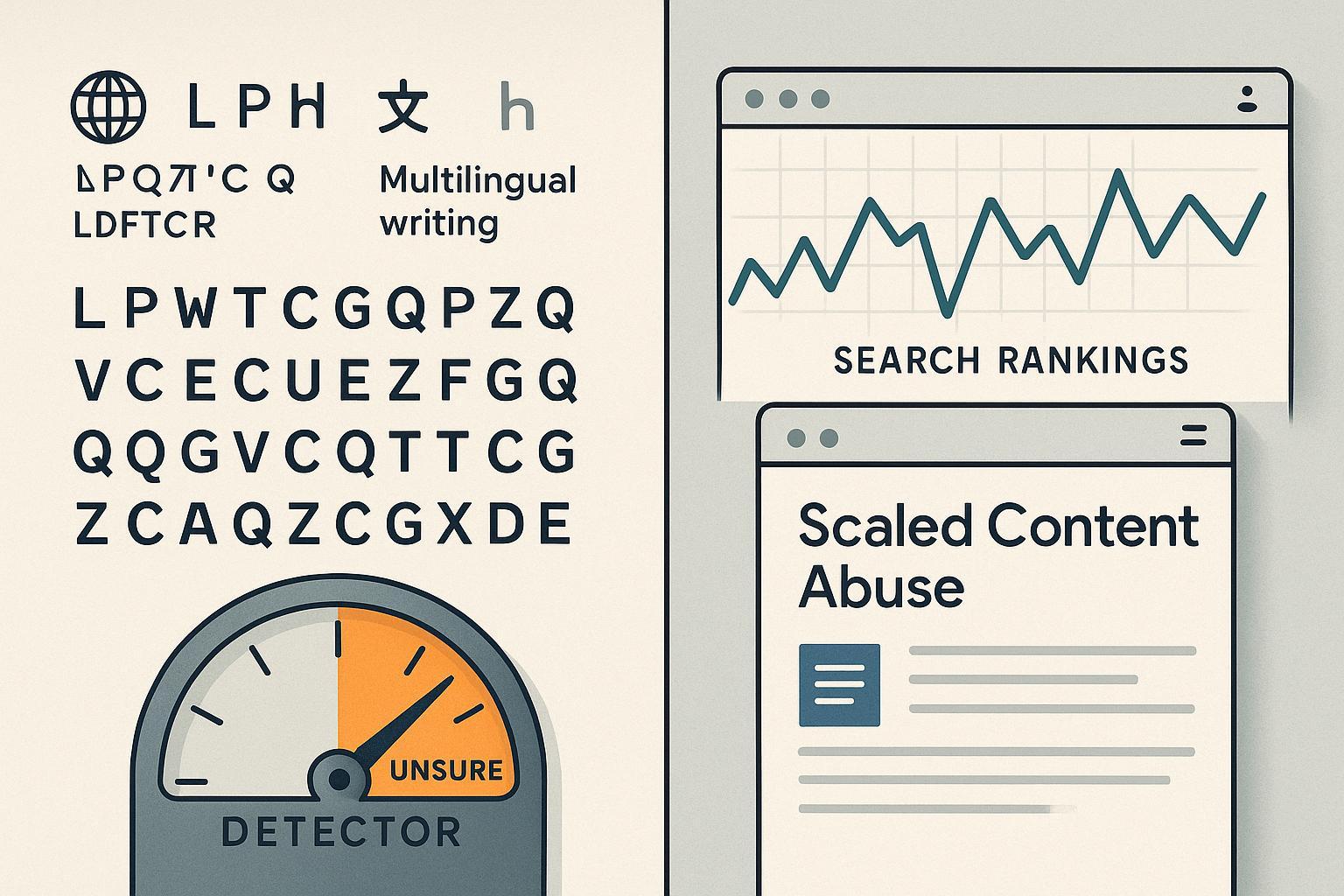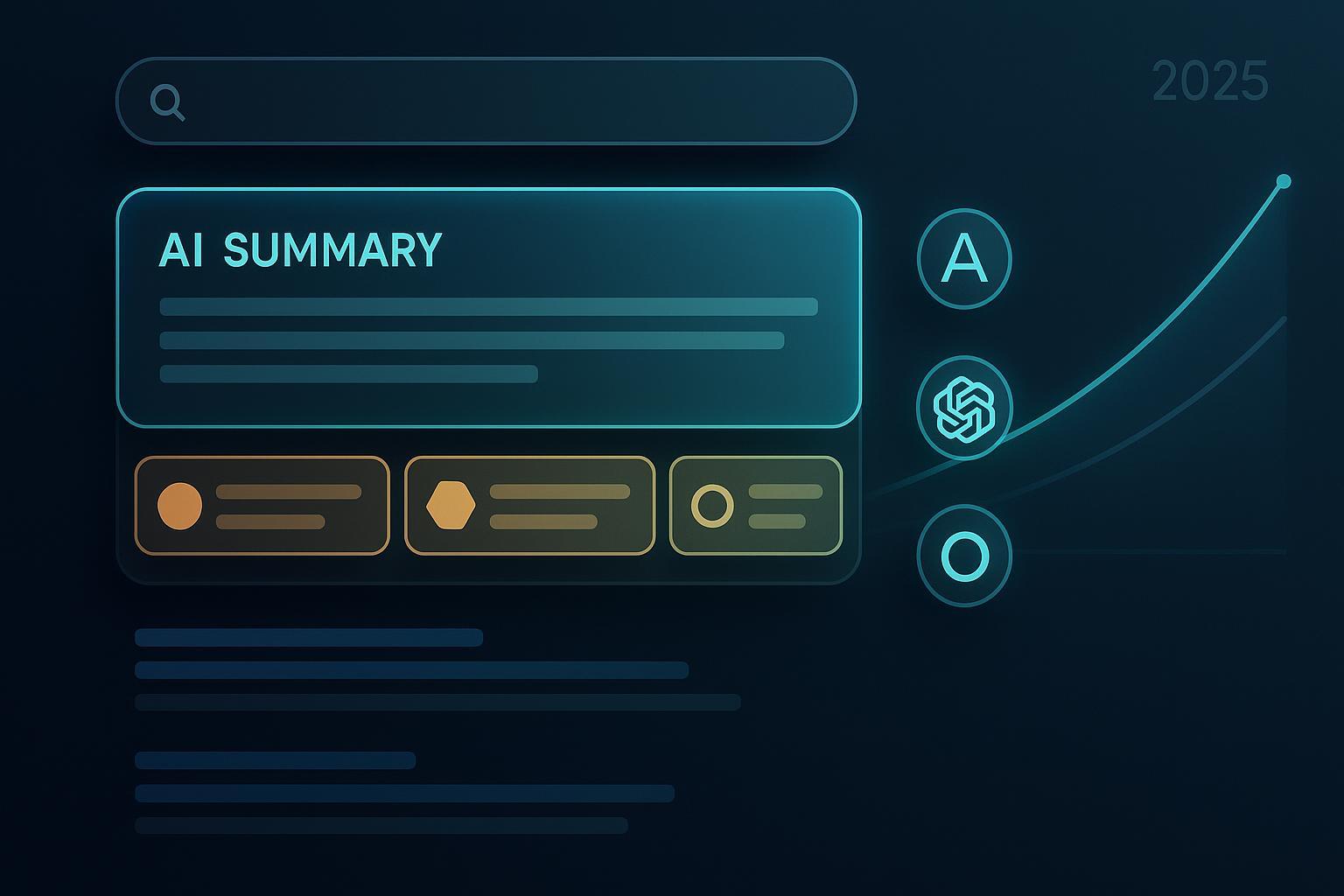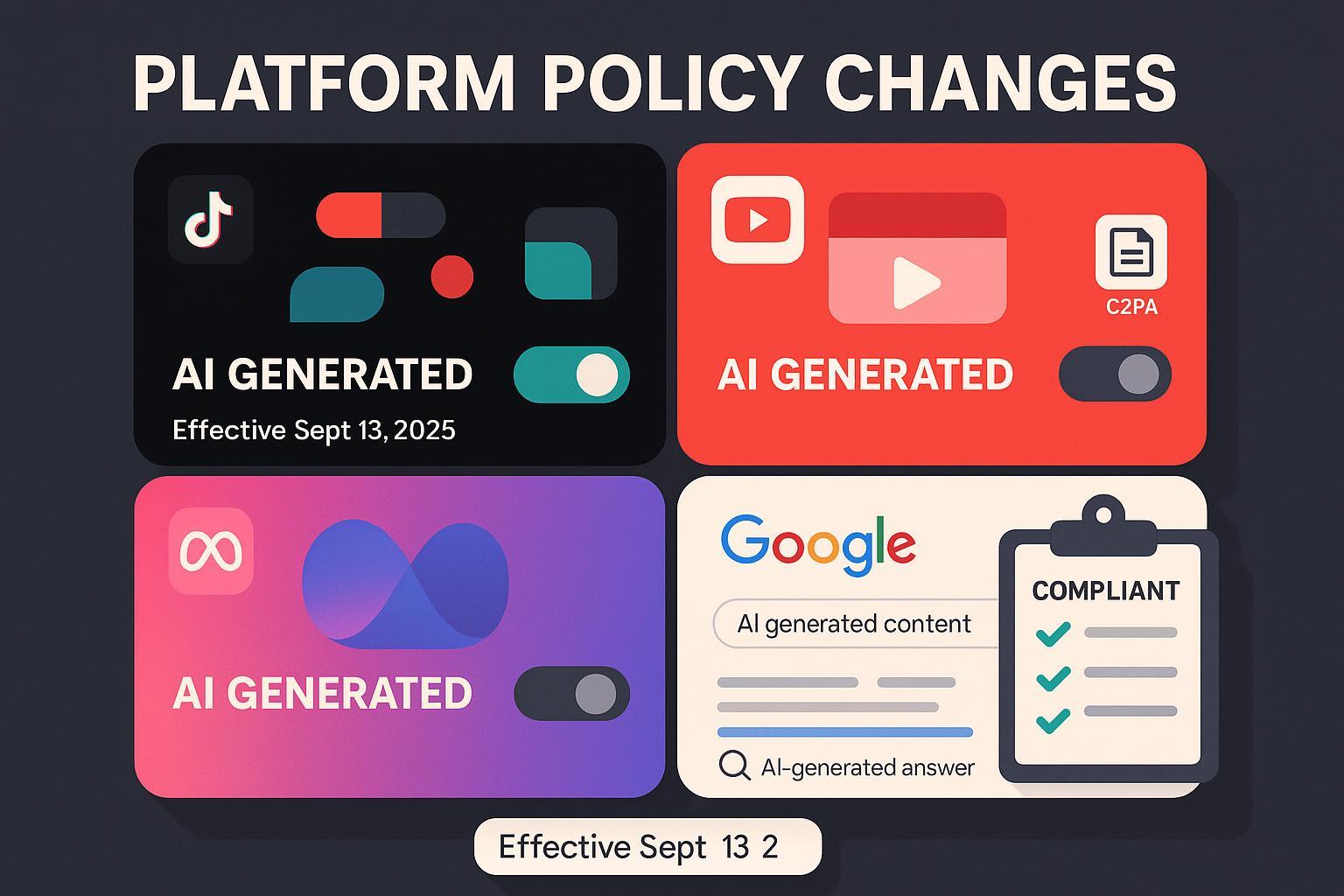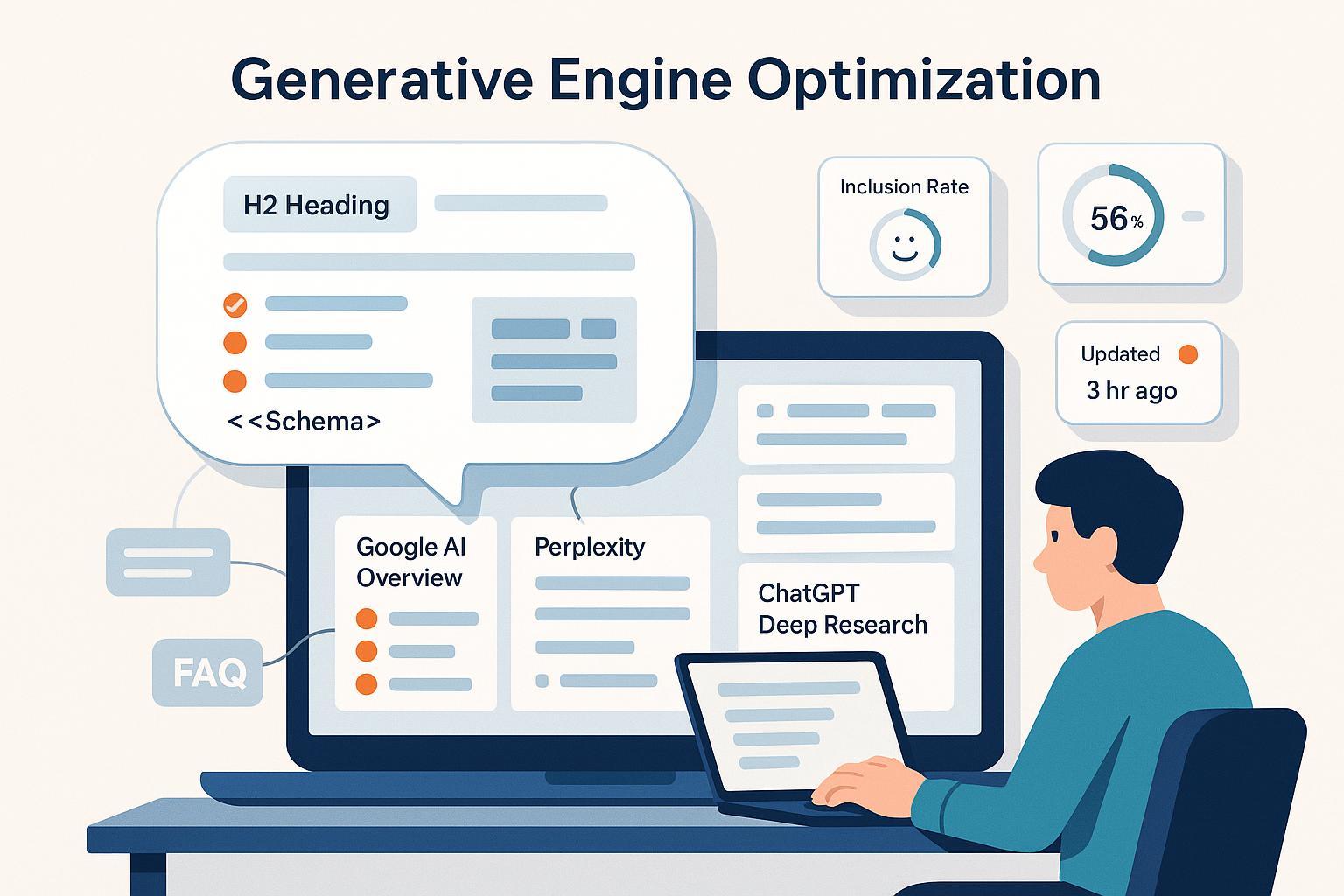Google AI Overviews 2025: Fewer Organic Clicks, Higher Brand Visibility
See why Google’s AI Overviews are lowering organic traffic—but boosting brand exposure in 2025. Learn strategies and measurement tactics now.

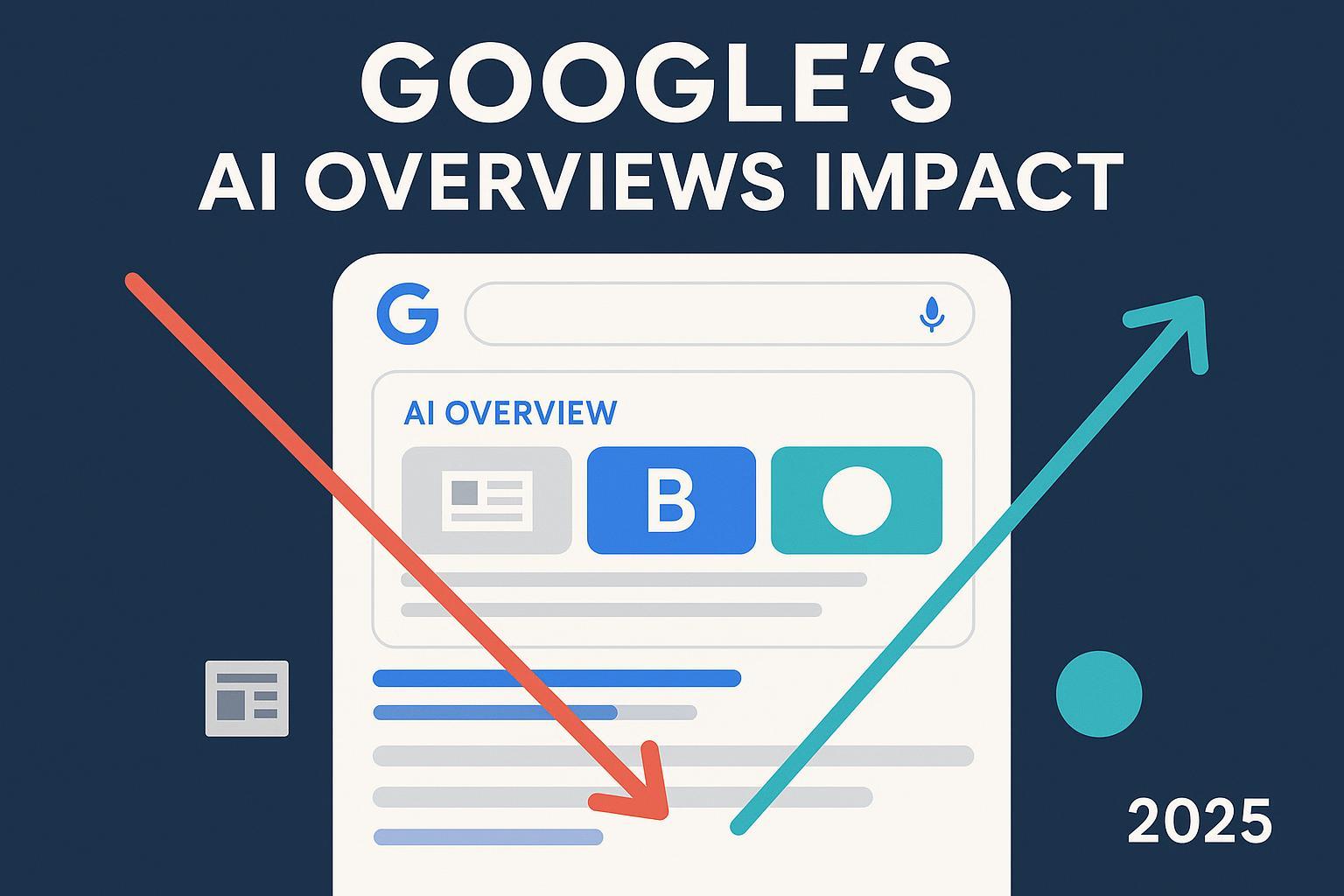
Google’s AI Overviews (AIO) are reshaping how search demand turns into outcomes. The pattern that’s crystallized through 2025 is straightforward but consequential: when an AI Overview appears, traditional organic clicks tend to fall, yet brands cited inside the Overview gain prominent on‑SERP exposure. For marketers and publishers, that creates a new optimization frontier: earning inclusion and persuasion inside the AI box, then measuring value beyond raw clicks.
This article synthesizes 2025 evidence, explains the mechanics behind the shift, and provides a practical playbook to win visibility—and convert it into business results—without resorting to hype.
What the 2025 data shows (and what it doesn’t)
-
Click behavior: In a March 2025 panel, U.S. adults clicked links to other sites on only 8% of searches when an AI summary appeared, versus 15% when none appeared—a sizable relative reduction in outbound clicks. Source: the July 2025 analysis by the Pew Research Center on lower link-clicking when an AI summary appears.
-
CTR impacts: Multiple industry datasets in April 2025 reported material CTR declines on SERPs with AIO, particularly for informational and non‑branded queries. See the April 2025 roundup, Search Engine Land’s coverage of CTR declines tied to AI Overviews.
-
Prevalence: Across tracked datasets, AIO appeared on a meaningful minority of queries through mid‑2025. For example, a July 2025 study reported notable growth from early in the year; see Semrush’s 2025 study on AI Overviews’ prevalence and growth.
-
Publisher referrals: News and non‑news publishers reported Google referral declines in May–June 2025, with losses outpacing gains; this was linked to AIO’s growing footprint. See the August 2025 analysis from Digital Content Next on publisher referral declines tied to AIO.
-
Google’s framing: In May 2025, Google emphasized that people using AI Overviews are more satisfied and that usage rises for queries that show AIO, centering the narrative on user experience rather than outbound clicks. See Google’s May 2025 blog on AI in Search and usage uplift.
A few caveats: AIO prevalence varies by method, time, and geography; most primary datasets in 2025 place U.S. prevalence in the mid‑teens to high‑teens percentage. Google does not publish official CTR deltas. Treat any single figure as directional and use your own data to benchmark impact by query group.
Why AI Overviews depress clicks but lift brand exposure
Two mechanics explain the paradox:
-
Answer-first UX concentrates attention at the top. AIO packages context, steps, and answers in a scannable card, reducing the need to scroll or click for many informational intents.
-
Citations surface brands inside the box. The Overview typically displays 3–8 citations with logos or titles, often overlapping with page‑one organic results. Independent tracking suggests strong overlap between AIO citations and top‑ranked pages, underscoring the continued value of classic SEO; see the October 2025 analysis that reported a meaningful overlap between AI Overview citations and top organic listings.
For publishers, this means fewer click‑throughs even when included. For brands, it means that on‑SERP presence can rise—even if sessions fall—because the Overview’s citations essentially “billboard” trusted sources where users linger.
Branded vs. non‑branded divergence: Why the query matters
Not all queries are equal. 2025 cohort studies show that non‑branded informational queries bear the brunt of CTR losses when AIO appears, while some branded queries actually see CTR lifts. One April 2025 analysis (covering hundreds of thousands of keywords across multiple industries) found branded queries that do trigger AIO are a different animal: users are already biased toward the brand and may click more readily. Search trade coverage in April 2025 summarizes this divergence and the role of co‑existing features like Featured Snippets (which can compound losses). See the earlier Search Engine Land reference for methodological context.
Strategic implication: You can’t manage AIO impact with a single KPI. Segment by intent (informational, commercial, transactional), by branded vs non‑branded, and by the presence of other SERP features.
How to earn inclusion in AI Overviews (without gaming the system)
Focus on the credible signals AIO appears to reward:
- Authoritative, complete answers: Build pages that resolve multi‑step informational tasks with clear headings, concise summaries, and judicious sourcing.
- Structure and clarity: Use scannable subheads, numbered steps, short paragraphs, and canonical definitions. Mirror how an AI would compose a trustworthy answer from your page.
- Schema parity: Implement relevant markup (Article, FAQ, HowTo, Organization, Author). Ensure consistent organization and author entities, and keep NAP/brand details aligned with your Knowledge Graph footprint.
- Topical authority clusters: Publish coherent clusters that demonstrate depth and breadth, not isolated posts. Internal linking should clarify relationships, not inflate.
- E‑E‑A‑T signals: Author bios, editorial standards, transparent sourcing, and updated timestamps—all visible and credible.
- Media diversity: Where appropriate, pair text with diagrams, short videos, or checklists that can be referenced or embedded by AI systems.
None of this replaces classic SEO. The overlap between AIO citations and top organic reinforces that ranking well and being link‑worthy still correlate with appearing in the Overview.
Convert on‑SERP visibility into business outcomes
Earning a citation is only half the job. To translate visibility into measurable value:
- Align snippets with click intent: Put a high‑clarity summary or “what you’ll learn” box near the top of your page that mirrors the answer users saw, then offer a compelling next step.
- Persuasive subheads: Use benefit‑driven H2/H3s (“Compare costs,” “Implementation checklist,” “Industry‑specific pitfalls”) that invite deeper engagement.
- Branded demand cultivation: If branded queries see less CTR erosion, invest in PR, partnerships, and brand campaigns that nudge intent toward branded navigation across your category.
- Multi‑SERP asset coverage: Target Featured Snippets, People Also Ask, video, image, and forum placements to widen discovery lanes even when AIO appears.
Measure what matters: A visibility‑to‑outcomes framework
Move beyond sessions. Track a layered model:
-
Presence
- AIO trigger rate by query group
- Inclusion rate and average citation position/format
-
Persuasion quality
- Sentiment of AI summaries where your brand is referenced
- Share of voice vs. competitors inside AIO
-
Assisted outcomes (1–7 day window)
- Branded search lift in Google Trends/GSC
- Direct navigation lift and homepage entrances
- Social mentions and dark‑social shares
-
Traffic efficiency
- CTR deltas on SERPs with vs. without AIO
- Conversion rate deltas for AIO‑exposed sessions vs controls
To operationalize the assessment, start with an AI visibility audit that segments queries by intent and identifies where AIO triggers, which sources are cited, and what sentiment the answer conveys.
Practical workflow example: Cross‑platform citation monitoring
Brands and publishers increasingly monitor citations across Google AIO, AI Mode, ChatGPT, and Perplexity to quantify share of voice and sentiment, then prioritize fixes where their sources are absent or misrepresented. One way teams do this is through a unified tracking workflow that captures which queries trigger AI answers, which domains are cited, and how sentiment trends over time.
- Start with your tier‑one query list across informational and commercial intents.
- Track weekly where AIO appears, which citations are pulled, and whether your owned assets (docs, product pages, knowledge resources) are represented.
- Compare with ChatGPT and Perplexity results to spot platform gaps and opportunities.
Many teams centralize this with platforms built for AI search monitoring. For example, Geneo can be used to monitor cross‑engine citations, sentiment, and historical query coverage in one place, while exporting insights for stakeholders. Disclosure: Geneo is our product. If you need to see how a specific query family is performing across engines, you can also review these monitor brand visibility in AI answers query reports.
Governance cadence: Keep a living change‑log
Because AIO prevalence and behaviors are evolving, build a review rhythm:
- Weekly: Refresh AIO trigger rates, inclusion rates, and citation share of voice by query cluster.
- Biweekly: Update CTR deltas and assisted‑outcome metrics; roll notable changes into a stakeholder summary.
- Monthly: Revisit content clusters, schema coverage, and E‑E‑A‑T elements; ship fixes.
- Ad hoc: Note major Google communications or observable UI changes that could affect AIO placement or behavior.
What to do next
- Prioritize your informational clusters that map to high‑value journeys and show frequent AIO triggers.
- Fortify content quality, structure, and schema so your best answers are easy for AI systems to cite.
- Implement the measurement model above and socialize the assisted‑value story internally so stakeholders don’t fixate on sessions alone.
- Diversify SERP assets and accelerate branded demand creation to offset non‑branded CTR erosion.
Mini change‑log (keep updated)
- Updated on 2025-10-09: Reflects mid‑to‑late 2025 datasets indicating reduced click behavior when an AI summary appears (Pew, July 2025), sustained CTR declines on AIO SERPs (industry roundups from April 2025), rising AIO prevalence (Semrush, July 2025), and publisher referral softness tied to AIO (DCN/Digiday, August 2025). Google’s May 2025 communication continues to stress usage uplift and satisfaction.
If you’re new to this space and want a foundation before you implement, read the beginner’s guide to AI search visibility optimization.


